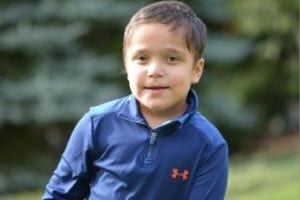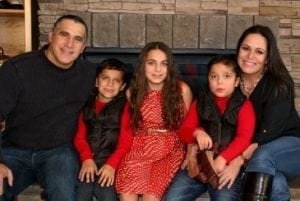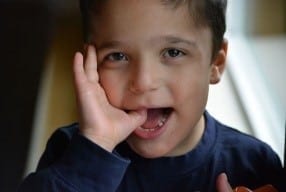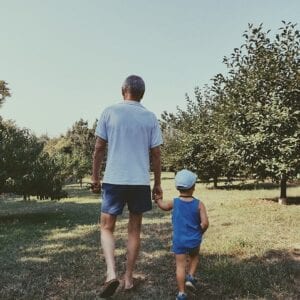As an official Friend of Rare Disease Week, we are highlighting some of our heroes and rare disease warriors’ stories. Below was submitted by the ADNP Kids Research Foundation and edited by Patient Worthy. Be sure to look out for their CBS spot tomorrow, bringing awareness to ADNP Syndrome.
Sandra Bedrosian Sermone of Brush Prairie, WA received a phone call last month that no mother wants to hear. Her son Tony’s recent brain MRI showed another episode of “diffused cerebral atrophy”, meaning his brain had decreased in size. This is not the first time Sermone has heard these words; it’s happened once before. Both times, Tony suffered a loss of oral motor movements, speech and other skills, similar to a small stroke. Both times Tony’s doctors could not give her any answers as to why this was happening and they have no treatment options.
 Tony is an adorable 10-year-old little boy born with a devastating rare genetic disorder called ADNP Syndrome. On the outside, Tony looks like a normal happy child but Tony has many debilitating medical conditions such as brain abnormalities, heart abnormalities, cortical vision impairment, severe cognitive and developmental delays, regression, feeding difficulties, sleep disorders, seizures, cerebral atrophy, and he is non-verbal and has autism. Tony needs assistance 24/7 to help him with all aspects personal care, including feeding and diapers. These are just some of the health problems that will affect him for the rest of his life.
Tony is an adorable 10-year-old little boy born with a devastating rare genetic disorder called ADNP Syndrome. On the outside, Tony looks like a normal happy child but Tony has many debilitating medical conditions such as brain abnormalities, heart abnormalities, cortical vision impairment, severe cognitive and developmental delays, regression, feeding difficulties, sleep disorders, seizures, cerebral atrophy, and he is non-verbal and has autism. Tony needs assistance 24/7 to help him with all aspects personal care, including feeding and diapers. These are just some of the health problems that will affect him for the rest of his life.
ADNP Syndrome, also known as Helsmoortel-VanDerAa Syndrome, is a rare neurodevelopmental genetic disorder caused by a mutation in the ADNP (Activity Dependent Neuroprotective Protein) gene.
This gene affects brain formation and development, as well as brain function. It can cause problems with the neurological, cardiovascular, endocrine, immune, musculoskeletal and gastrointestinal systems, as well as vision, hearing, growth, feeding and sleep. It can cause mild to severe delays in intelligence, speech and motor planning (including gross, fine and oral motor) and it causes behavior disorders such as Autism Spectrum Disorders and is one of the most frequent ASD-associated genes known to date.
Tony was the first child in the United States diagnosed after the discovery of the syndrome in 2014, making him the 11th case in the world.
At that time, only one single medical publication existed on 10 children. The syndrome had no name. There was no place to find support, no place to connect with other families, no website, no medical protocol, no treatments, and worst of all, NO cure. Essentially there was no information to understand what this diagnosis meant for Tony or his future.
Sandra immediately started researching medical journals and scientific papers to learn about the ADNP gene and says that in 2014, very little existed.
She became what she calls a Google-Educated Parent Scientist.
During the day she was a mother of three, and after they were in bed each night, she became an ADNP researcher. She connected with the neuroscientist in Israel who discovered the ADNP gene and other scientific teams doing research, and has been working with them ever since.
 Sandra is a mother on a mission. She aims to accelerate research to better understand this rare genetic condition, to spread awareness so that un-diagnosed children can be identified, to find scientists to investigate existing drugs as viable treatment options, and most importantly, fast-track new treatment discovery.
Sandra is a mother on a mission. She aims to accelerate research to better understand this rare genetic condition, to spread awareness so that un-diagnosed children can be identified, to find scientists to investigate existing drugs as viable treatment options, and most importantly, fast-track new treatment discovery.
“This is a battle for us. At its core it’s no different than many other pediatric diseases except for one thing: No one has ever heard of ADNP. We don’t have a “St Judes” or celebrity’s helping us raise awareness. We are parents battling against a disease that has no treatment and I won’t stop until we have one. Our children with ADNP are just as important as children who might be battling pediatric leukemia or juvenile diabetes. The difference is, those children have treatment options and our children have nothing”.
Since no website or parent group existed in the world, Sandra founded and created the informational website ADNPkids.com and the ADNP Syndrome Parent Support Group. And in 2016 she founded the ADNP Kids Research Foundation, an accredited non-profit organization to raise awareness and money to fund these types of research projects. She says her biggest motivation for starting the foundation was “to make sure that families affected had a voice, so that they could stridently push for more research to investigate and find treatments for ADNP Syndrome”. The NIH rarely funds projects this early in the game, so parents are driving to raise money for the foundation to fund these types of research studies.
In just 2 years, Sandra has been a powerhouse for ADNP.
In addition to collaborating with medical research experts around the world, she has built an international alliance of families who have children affected by ADNP, all while being a stay-at-home mother of three.
Her parent group consists of 146 diagnosed cases worldwide, and through this group she has created her own research project and has been working with scientists around the world to better understand ADNP. Her tireless work has provided amazing guidance and resources that were not previously available.
Sandra has also co-authored five ADNP specific medical publications (three are published (PUBMED) and two are currently in peer review). Her accomplishments include the discovery of a genetic biomarker for ADNP, “premature primary teething”, a diagnostic biomarker that is not seen in any other syndrome in the world.
One of the research projects Sandra has worked on has been with a team based out of the Seaver Center for Autism Research and Treatment in New York.
They have begun an important clinical research study on ADNP that will comprehensively characterize the ADNP syndrome phenotype while investigating the neurobiological pathways that underlie ADNP syndrome through stem cell and animal studies.
Sandra has also been working with a team based out of Israel who could possibly have the first viable treatment for ADNP Syndrome. “It started out as a drug for Alzheimer’s, which is linked to ADNP, but after the discovery of the syndrome, a team at Coronis Neurosciences has been diligently working on a new similar drug, that they say is showing very good results. So this could be a game changer for ADNP,” she said.
It is estimated that the Seaver project will ultimately run upwards of two million dollars for the enrollment of 50 children in this study. The pre-clinical trial work for the Coronis Neurosciences drug will run upwards to one million dollars. “So you can see where we have a problem, because I don’t have three million dollars and neither does the foundation. In just two year’s time we have moved mountains for this rare and unknown disease, but now the barrier for us is funding. And I don’t know how we will be able to raise that much money,” she said.
When asked to describe the difficulties that she has faced as the parent of a child with a rare disease, Sandra described it this way:
“Being the parent of a child with a rare disease is not fun. Knowing that there is no one who understands his condition, that there is no cure or treatments, and no one who can tell me what his future looks like, is extremely overwhelming. It is not something that anyone can relate to unless they experience it themselves.”
 She continues, “Having to go out and push for research and awareness is exhausting but also extremely rewarding. It’s heartbreaking sometimes, to watch other children grow up and experience school, team sports, friendships, and to know they are building independence to grow and reach their full potential. With Tony, instead of watching him experience all of those things, I spend year after year fighting with a school that doesn’t know what to do with him, instead of putting him in activities like team sports I am taking him to therapies and doctor visits. He has no friendships because he cannot talk or play with other children. Instead of growing to be independent, he will need us to take care of him for the rest of his life.”
She continues, “Having to go out and push for research and awareness is exhausting but also extremely rewarding. It’s heartbreaking sometimes, to watch other children grow up and experience school, team sports, friendships, and to know they are building independence to grow and reach their full potential. With Tony, instead of watching him experience all of those things, I spend year after year fighting with a school that doesn’t know what to do with him, instead of putting him in activities like team sports I am taking him to therapies and doctor visits. He has no friendships because he cannot talk or play with other children. Instead of growing to be independent, he will need us to take care of him for the rest of his life.”








